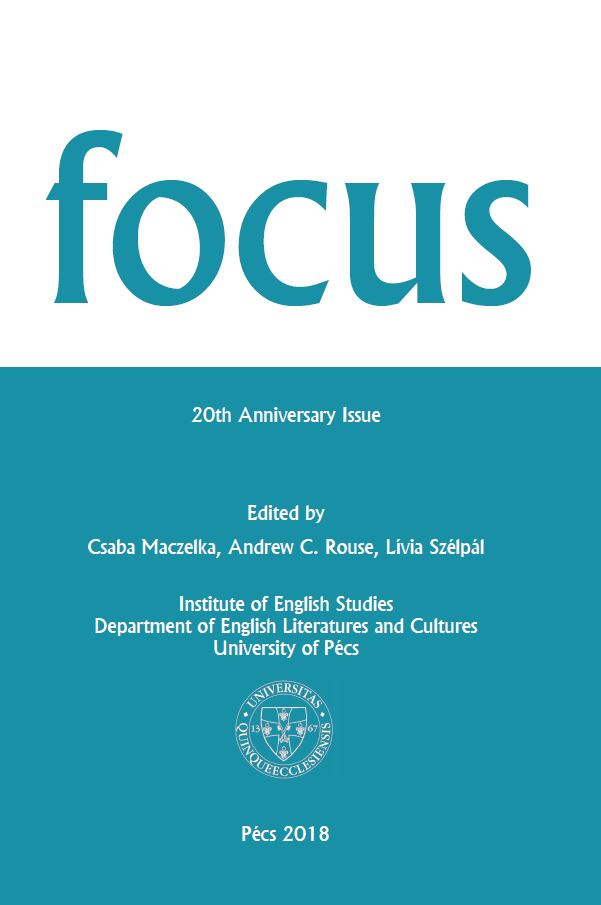Journeys Into Night: Agewise Cinematic Constructions in Cas and Dylan and Our Souls at Night
DOI:
https://doi.org/10.15170/Focus.11.2018.7.95-104Abstract
Ashton Applewhite, American writer, activist, blogger and expert on ageism, the author of This Chair Rocks: A Manifesto Against Ageism (2016), remarked in her 2017 TED (Technology, Entertainment, Design) series lecture “Let’s End Ageism” that today when the aged population is, according to the United Nations statistics, at its highest level in human history, in most societies, including developing and the developed countries alike, “people are living longer and societies are getting grayer; you read and hear about it on all media platforms and outside of them.” This essay will be about a slice of these platforms tackling cultural narratives involving longevity and ageing―and their subsequently increased visibility on the silver screen. In order to investigate ageing as a marker of life course identities in two cinematic matching and mismatching journeys into ageing, I have chosen two North American movies presented in the past five years, the Canadian-made Cas and Dylan (2013) directed by Jason Priestley and with Richard Dreyfuss and Tatiana Maslany in leading roles, and the US-produced Our Souls at Night (2017), directed by Ritesh Batra, featuring in the main roles Jane Fonda and Robert Redford. I am interested to see the ways in which the representation of senior citizens―in the above-mentioned movies all being members of the North American Baby Boomers generation―is challenging the cultural myths of aging through various acts of performativity.
Downloads
Published
How to Cite
Issue
Section
License
Copyright (c) 2022 FOCUS: Papers in English Literary and Cultural Studies

This work is licensed under a Creative Commons Attribution-NonCommercial-NoDerivatives 4.0 International License.
FOCUS: Papers in English Literary and Cultural Studies follows the principles laid down by Creative Commons, which provides guarantees for the Author’s copyright while also ensuring that intellectual properties are made available for the wider public in a digital form. All papers submitted to the journal apply the following licence conditions (indicated on the journal’s website as well as in individual publications):
“© This work is licensed under a Creative Commons Attribution-NonCommercial-NoDerivatives 4.0 International License.”
You are free to:
- Share, copy and redistribute the material included in the journal in any medium or format under the following terms:
- Attribution — You must give appropriate credit to the Author, and indicate the original place of publication [FOCUS: Papers in English Literary and Cultural Studies, Issue nr., page numbers.].
- NonCommercial — You may not use the material for commercial purposes.
- NoDerivatives — You are not allowed to remix, transform, or build upon the material.
- The above conditions must always be indicated if the journal material is distributed in any form.
- The above conditions must always be met, unless a written permission signed by the Author and the Editor-in-Chief states otherwise.

